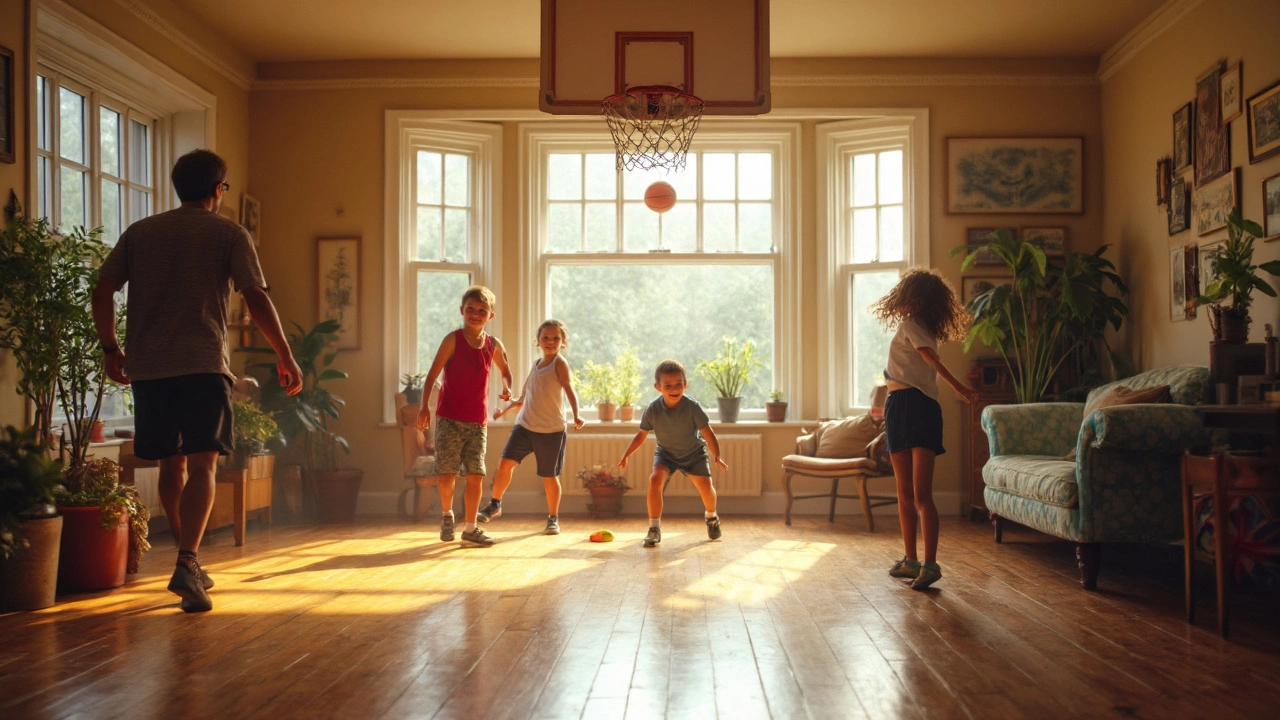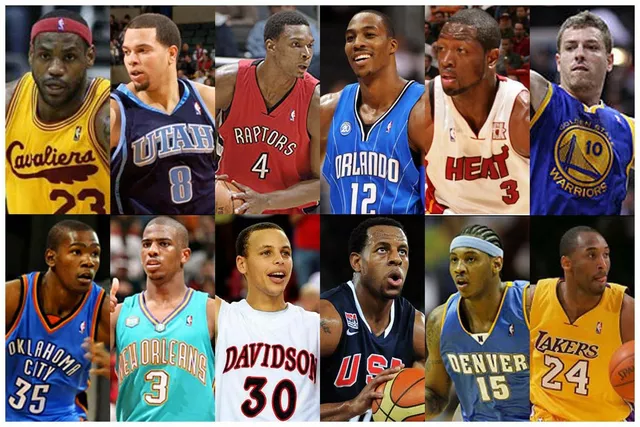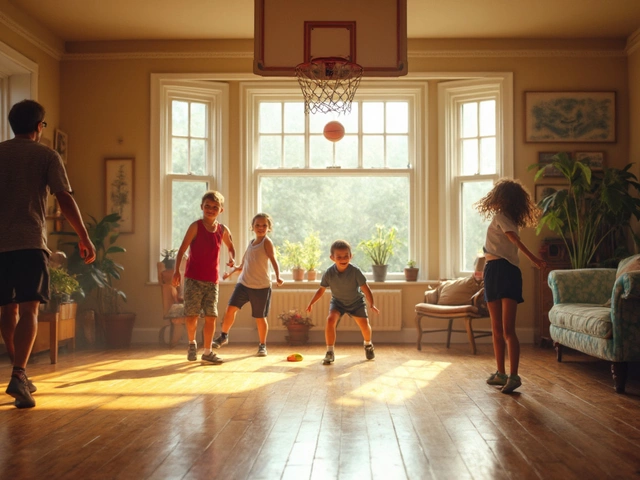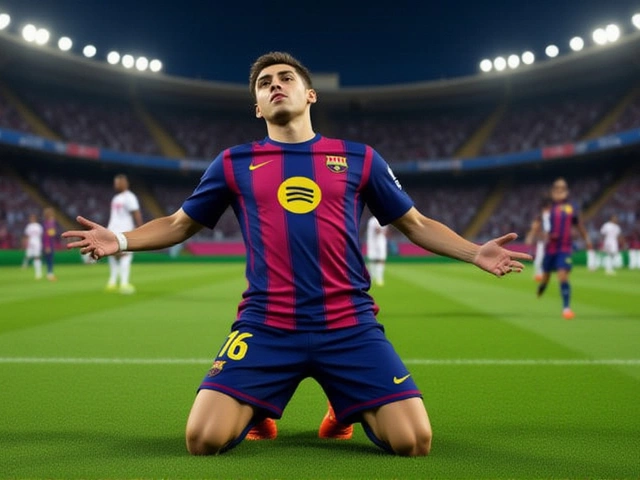In my house, basketball isn't just a drive to the gym or a game in the park—it's something we do after dinner with Clyde tossing shots in the living room, and Tanner dribbling circles around the dog. But if you've ever tried playing ball inside, you know bad gear makes for trashed floors and lots of frustration. Picking the best indoor basketball isn't just about price or a big brand logo. The right ball will actually grip better on a hardwood or synthetic court, bounce consistently, and last way longer than cheap rubber balls.
Here’s the truth: most basketballs you see in stores are built for outdoor use, and they don’t play the same way inside. Indoor balls use real leather or composite covers designed for that smooth, squeaky gym court. When you choose the best indoor basketball, you’re paying for control, reliable bounce, and a feel you can’t get from outdoor versions. Plus, you avoid those nasty black rubber marks the outdoor ones leave all over your floor. I learned this one Saturday after inviting my friends over to play. Let’s just say my wife, Sabina, was not amused by the scuffed floors.
Before you buy, just pick up a couple different balls at a store if you can. Grip them, feel the texture, give them a squeeze. A good indoor basketball feels grippy but not sticky, and doesn’t slip even if your hands are a little sweaty. Starting with the right gear will make hoops at home, in school gyms, or even in a rec center a lot more fun and less frustrating.
- Why Play Basketball Indoors?
- What Makes a Ball the Best Indoor Basketball?
- How to Set Up an Indoor Basketball Space
- Maintaining Your Indoor Basketball
- Fun Ways to Practice and Play Inside
- Common Mistakes and How to Avoid Them
Why Play Basketball Indoors?
If you’ve ever tried shooting hoops outside in the middle of February or in August heat, you know outdoor basketball comes with problems. Playing indoors keeps things predictable. No wind messing with your shot, no rain stopping your game. The temperature stays right, so you can actually focus on your skills.
Kids and adults both get a safer play space too. Indoor courts are built for basketball from the ground up. The floors have some bounce, which lowers the risk of rolled ankles or scraped knees. Most schools and community centers in the U.S. use indoor gyms for this exact reason. Less slipping and falling, more playing and getting better.
- No waiting for the weather to clear up. That’s perfect for folks in rainy, snowy, or super-hot places.
- Less wear and tear on your ball and shoes. Indoor courts are smoother, so stuff lasts longer.
- Way fewer distractions. No cars, no street noise—just hoops and focus.
The real kicker is consistency. Professionals and college players do almost all their training indoors. Shooting a three-pointer inside feels like a three-pointer on game day. Best indoor basketball models are made for that smooth, polished surface, so you can master your handle and shot in the right conditions.
| Where Americans Play Basketball (2024 Survey) | Percent (%) |
|---|---|
| Indoor gym | 46 |
| Driveway/Curb | 31 |
| Public park | 17 |
| Home indoor | 6 |
Most love the gym for good reason. Even at home, my family gets more playtime during the winter or late in the evening, because the living room hoop beats driving to a local court after work or school. Indoor basketball isn’t just practical—it’s a chance to work on your game as often as you want, no matter what’s happening outside.
What Makes a Ball the Best Indoor Basketball?
First off, not all basketballs are made the same. If you’re eyeing the best indoor basketball, you need to focus on a few things: the cover material, grip, weight, balance, and size compatibility. Ask anyone who plays regularly—ball choice isn’t just about looks. It changes how you shoot, pass, and dribble.
Let’s break down what actually matters most when picking an indoor ball:
- Material: The best balls use genuine leather or high-quality composite leather. Real leather gives that pro-level cushy feel, but it takes time to break in. Composite leather grips well right out of the box and is easier on your hands—and wallet.
- Grip: The panel design and texture matter more than you’d think. Grooves should be deep enough for fingertip control, but not so rough that they chew up your skin. Better grip equals tighter handles and more confident shots.
- Consistent Bounce: High-end balls have butyl bladders and top shaping technology, so rebounds feel familiar and true every time. Cheap ones? Expect random bounces and dead spots before long.
- Weight and Size: Regulation size for men is 29.5 inches, women’s is 28.5. A legit indoor basketball will be dead-on here. Too heavy or too light, and your game will be off.
- Durability Indoors: Some fancy balls work outdoors or in, but most indoor-only types will get trashed fast if you take them on concrete. Indoors, though, a good ball will last years if you treat it right.
You might be curious about the brands courts and pros trust. Here’s a quick peek at what big college and NBA gyms actually use:
| Model | Material | Used By | Price Range |
|---|---|---|---|
| Spalding NBA Official | Genuine Leather | NBA, NCAA | $140-180 |
| Wilson Evolution | Composite Leather | High Schools, Gyms | $65-80 |
| Molten GG7X | Composite Leather | FIBA, Pro Leagues | $70-90 |
Real talk: The Spalding NBA Official is stiff out of the box and needs real play to soften up, but once you’ve broken it in, it ages like fine wine. The Wilson Evolution’s been the top pick in most U.S. high schools for years—it’s soft, able to handle hours of pickup, and has crazy good grip. Molten balls bounce slightly differently, but plenty of international courts swear by them.
If all you want is something solid for home or friendly games, you don’t need to spend pro-ball money. But remember, a legit indoor ball really will help you develop better control and confidence compared to all-purpose outdoor types. Once you feel the difference, you’ll never go back to those cheap rubber balls again.
How to Set Up an Indoor Basketball Space
Turning a part of your home into a spot for basketball doesn’t take builder skills or a fancy budget. You just need the right gear, a safe space, and a little bit of know-how. If you’re like me and have kids who can’t put the ball down, planning it right from the start saves you a lot of headaches.
First off, measure your space. If you’re aiming for realistic shooting practice, try to find an area at least 12 feet long—think basement, garage, extra room, or even a cleared-out hallway. Safety comes first, so remove anything breakable or sharp, and keep a little distance from walls.
Here's what you should get for a basic setup:
- Best indoor basketball: A quality composite leather ball works best and won’t mark floors.
- Wall-mounted or over-the-door hoop: Look for rims with spring action and a sturdy backboard, about 18 inches across for a real-game feel.
- Soft flooring: Lay down rubber mats or cheap foam tiles, especially if you’ve got hardwood or tile. It helps with grip and keeps bouncing noise down.
- Good lighting: Overhead LED fixtures or even a big, bright lamp—it makes a difference in spotting those corner threes.
If you want to go bigger—maybe even simulate gym conditions—here are some extras:
- Freestanding hoop system (for garages/basements with high ceilings)
- Wall padding (reduces injuries on missed layups—trust me, kids are fearless)
- Ball return net so you’re not running after every shot
- Bluetooth scoreboard for keeping games honest
Check out the basics you’ll want to consider as you pick your spot:
| Feature | Why It Matters | Cost Range (USD) |
|---|---|---|
| Hoop & Backboard | Vital for real practice | $30-$150 |
| Floor Protection | Prevents damage, safer for ankles | $40-$120 |
| Lighting | Reduces eye strain, improves accuracy | $25-$100 |
| Wall Padding | Protection for young (or clumsy) players | $60-$200 |
Whatever gear you choose, always make sure stuff is secure. Tighten hoop brackets, tape down mats, adjust lighting so nobody shoots in their own shadow. And finally, keep a window open or run a little fan—indoor basketball gets sweaty, even when it’s minus 10 outside.

Maintaining Your Indoor Basketball
If you want your basketball to last, it needs proper care. I’ve trashed a few pricey balls by ignoring the basics, and nothing ruins a game at home more than a ball that’s warped or slippery. Whether you paid top dollar or found a solid deal, the rules for upkeep are pretty much the same.
First off, keep your ball indoors. Moisture, dirt, or even too much sunlight can mess with the surface, especially if you’re using a real leather indoor ball. Indoor basketballs are designed for, well, indoor courts. Taking them outside just wears them out quick and ruins the grip.
Regular cleaning is key. Don’t bother with strong soap or dunking your ball in water. Just grab a soft, slightly damp cloth and wipe it down every week or two, especially if it picks up dust from home floors. For stubborn spots, a little gentle dish soap mixed with water works, but never soak your ball.
Check the air pressure every month or so. A ball that’s too flat or too pumped-up messes with your shot and bounce. Most manufacturers recommend between 7.5 and 8.5 PSI for standard size balls (Size 7 for adults). Use a basic pressure gauge—it’s cheap and does the job. If the ball feels rock hard or gets squishy fast, that’s a red flag. Here’s a quick guide:
| Size | Recommended Pressure |
|---|---|
| Official (Size 7) | 7.5-8.5 PSI |
| Women's/Youth (Size 6) | 7.0-8.0 PSI |
| Junior (Size 5) | 4.5-6.0 PSI |
Keep sharp objects and rough surfaces away from your ball. Clyde once decided our ball would be perfect for backyard soccer. After a patch of rough asphalt, that "best indoor basketball" was never the same again—cracked, slippery, lost its awesome feel.
- Store the ball in a cool, dry place—no garages in the summer, no damp basements.
- Don’t stack heavy stuff on top of it. Balls out of shape are the worst.
- Pump with a needle that’s been moistened to avoid splitting the valve.
- Rotate your ball use if you have more than one. It spreads out the wear and tear.
Taking five extra minutes every month keeps your ball in game-ready shape and saves you money in the long run. Treat it right and your indoor ball will keep that sharp bounce and perfect grip for way longer than you’d expect.
Fun Ways to Practice and Play Inside
When it comes to staying sharp, there’s actually a lot you can do with a best indoor basketball even if you’re stuck inside. No need to clear out the whole living room—just a little space and a decent ball will do. My kids, Clyde and Tanner, rarely run out of creative ideas, but here are a few that work every time, for any age.
- Shooting Drills: If you’ve got a mini hoop on your door or a mounted hoop over the garage (like we do), practice your free throws, bank shots, or even quick release jumpers. Try one-minute shooting challenges and see who gets the highest score. Even a laundry basket on a chair works in a pinch.
- Dribbling Skills: Grab your ball and try dribbling between chairs or around household obstacles. Use both hands. Challenge yourself to keep your eyes up. Tight hallway? Perfect for working on close control and crossover moves.
- Passing Games: Set targets on the wall with masking tape, or see who can bounce-pass a ball into a laundry basket most times in a row. You’ll notice your passing accuracy skyrocket, which definitely showed up in my next weekend pickup game.
- Footwork and Agility: Mark spaces on the floor with tape—do ladder steps, pivots, and shuffles. You don’t need fancy training equipment. Even hopscotch patterns boost balance and speed indoors.
- 1-on-1 or H-O-R-S-E: Short on space? Play the classic H-O-R-S-E with family or roommates using a soft ball and any mini hoop. Or, set up full 1-on-1 mini games with simple ground rules like “no dunking on the coffee table.”
Little indoor routines like these can make a huge difference in ball handling, shooting, and overall confidence. The trick is keeping it light, getting everyone involved, and using whatever space you’ve got. Don’t worry about being too formal—just have fun and watch your skills level up fast.
Common Mistakes and How to Avoid Them
Most folks jump into indoor basketball thinking all balls and setups work the same as outdoor play. That’s where trouble usually starts—wasted money, injuries, or just not having much fun. Here’s a breakdown of the mistakes I see the most and some clear ways to dodge them.
- The biggest blunder? Using outdoor balls indoors. Rubber balls might be cheaper, but they don’t stick to gym floors, they bounce wild, and worst of all, they can scratch hardwood like a car key. Always use a ball made for indoor play. Check the label: "composite leather" or "genuine leather" is what you want.
- Storing basketballs near heat vents or in a damp spot is another classic mistake. Each year, about 30% of indoor balls get ruined at home just from bad storage. (Take it from me, Clyde learned this the hard way by leaving his game ball by our basement washer every weekend.) Keep your basketball in a cool, dry place, preferably in a mesh bag so it can breathe.
- Incorrect inflation is a silent game wrecker. Under-inflated balls flop and are hard to shoot, while over-inflated ones bounce unpredictably and can even damage the seams. Stick to the manufacturer's suggested PSI, usually marked near the valve. Here’s a quick cheat sheet:
| Ball Size | Recommended PSI |
|---|---|
| Official (29.5") | 7.5 - 8.5 |
| Intermediate (28.5") | 7.0 - 8.0 |
| Junior (27.5") | 6.0 - 7.0 |
- Neglecting to clean your ball is more common than you think. Sweat and dust pile up, making the ball slippery. Just wiping it down every week with a damp cloth and drying it right away keeps the grip solid and extends the life of the best indoor basketballs.
- People often forget to check their playing area. Chairs, glass tables, and loose rugs are indoor hazards. Make sure your gym or home court is free of stuff that leads to twisted ankles or worse. I’ve nearly lost a TV to a rogue pass from Tanner more than once. Tape down rugs, move breakables, and you’ll prevent some major headaches.
Fixing these mistakes doesn’t take a lot of time or money, but it keeps the game safer and way more enjoyable for everyone—whether you’re playing alone or with family and friends.





